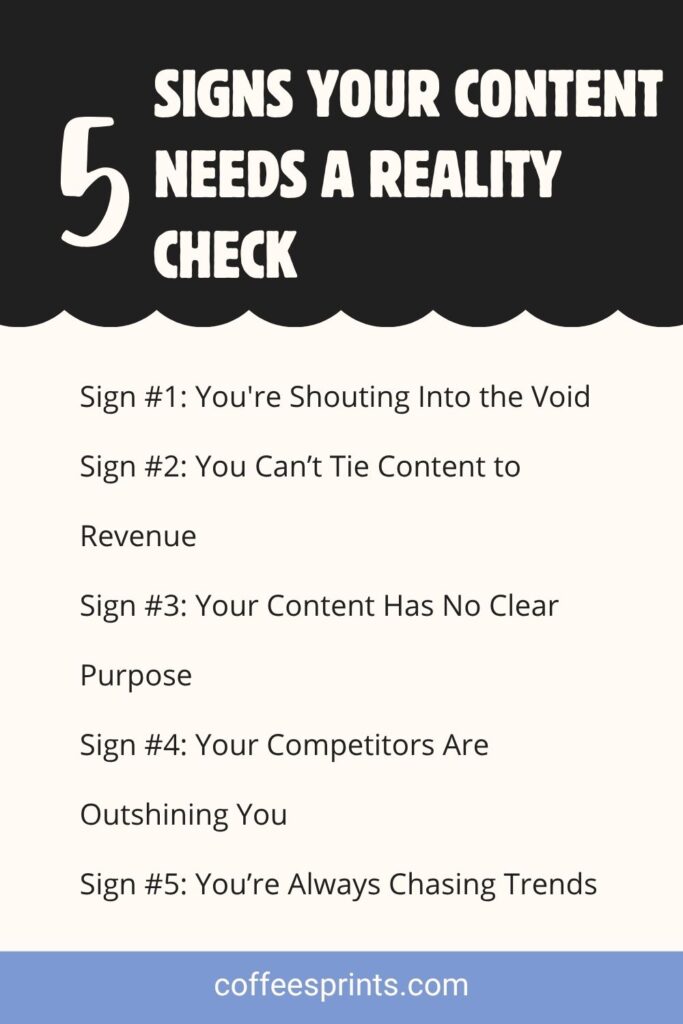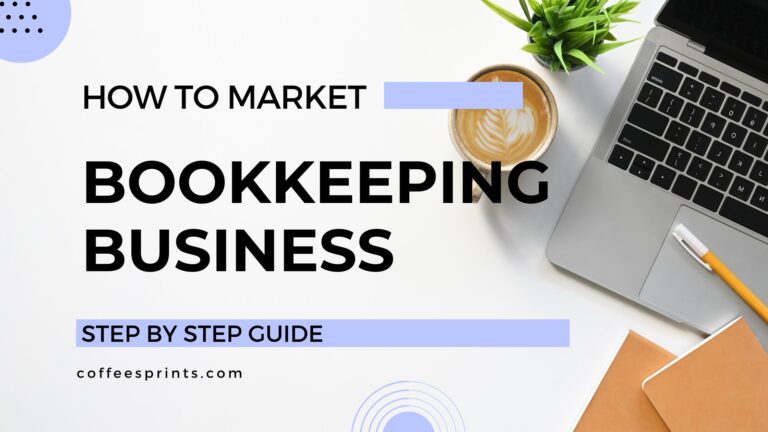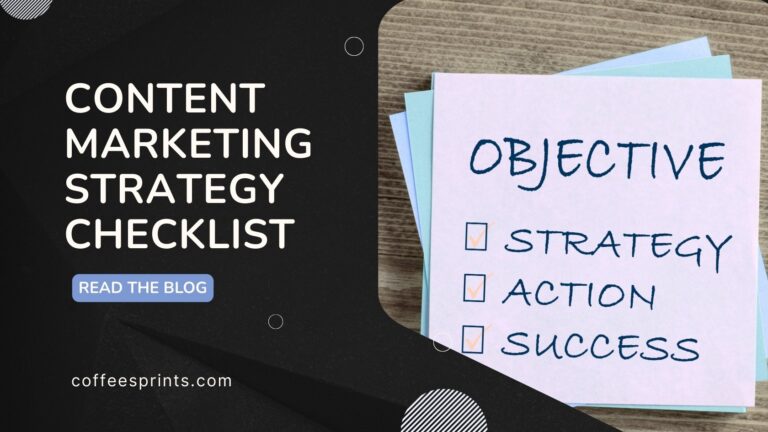5 Signs Your Content Marketing Needs a Reality Check
You’ve been posting. Blogging. Showing up on Instagram. Pouring time into writing and editing and making sure everything looks just right.
And yet… nothing!
No sign-ups. No messages. No leads. Just a lot of effort that doesn’t seem to be going anywhere.
Sound familiar?
You’re not alone, and you’re not bad at marketing either. Most small and mid-sized businesses fall into the same trap: busy with content, but with no real clarity on what’s moving the needle.
Let’s change that.
In this post, we’ll walk through five warning signs that your content isn’t working and needs a content marketing audit, and more importantly, what you can do about it.
What Is a Content Marketing Audit (And Why It Matters)?
A content marketing audit is like a health check for your content. It helps you zoom out and ask: Is this content actually doing what it’s intended to do?
That means attracting the right people, building trust, and ultimately supporting conversions.
It’s not about nitpicking every word. It’s about aligning your blog, emails, and social posts with your business goals. For small business owners and founders, especially, a content audit gives you clarity on where you’re getting traction — and where you’re wasting time.
A good audit looks at:
- SEO performance (what’s the ranking?)
- Content quality and messaging
- Lead generation pathways
- Conversion opportunities
- Strategy alignment
If your content feels like busywork instead of a business growth tool, this step is non-negotiable.
5 Signs You Need A Content Marketing Audit

Sign #1: You’re Shouting Into the Void
You hit ‘publish,’ share it on social media, and maybe send a newsletter too… and nothing. A couple of likes from your team, maybe your cousin. But no real response.
What this looks like:
- Posts get minimal engagement
- Blog reads stay stuck at zero
- Emails go unopened
- Your analytics feel like a flatline
Why it happens:
You’re either targeting the wrong people or saying the right thing in the wrong way. Sometimes both. Most often, it’s because the content isn’t rooted in strategy. You’re talking at people, not to them.
The cost:
Wasted hours. Fading motivation. And a growing sense of “maybe this just doesn’t work for my company/niche.”
Reality check:
Check 10 posts or blogs. If fewer than 10 people engaged, it’s time to shift your strategy.
Sign #2: You Can’t Tie Content to Revenue
You’re staring at your numbers and wondering: “We’ve done all this—blogging, email, social—but… what’s it actually doing?”
What this looks like:
- You can’t name a single blog or post that led to a sale
- Marketing feels like overhead, not a growth lever
- Sales and marketing aren’t aligned
- Content feels like a checkbox, not a sales tool
Why it happens:
Marketing and sales often run parallel, instead of together. And without basic tracking (even manual), it’s hard to know what’s working.
The cost:
Content loses credibility. Budget and trust get pulled. You keep guessing and miss the compounding impact of doing more of what actually works.
Reality check:
Can you trace your last 3 clients or customers to a specific piece of content, email, or ad? If not, start there.
Sign #3: Your Content Has No Clear Purpose
You’re creating “because we haven’t posted in a while.” Or because a competitor blogged about it. Or because it just felt like something to say.
What this looks like:
- Your calendar is a jumble of topics
- Nobody can explain why a post was created
- There’s no funnel, no flow—just output
- Everyone’s working hard, but not together
Why it happens?
Without a documented content strategy (even a simple one), your team defaults to doing something. Unfortunately, “something” rarely makes a difference.
The cost:
Confused audience. Wasted energy. Inconsistent brand voice. And zero momentum.
Reality check:
If someone on your team suggests a post, ask: “Who’s it for? What’s the goal? What should happen after?” If there’s no clear answer, pause.
Need help identifying your target audience, and find a content marketing plan works for you, let us help.
Sign #4: Your Competitors Are Outshining You
Every time you search your niche, the same names pop up. Their posts get shared. Their pages rank. Their content sounds clear, confident, and—annoyingly—really good.
What this looks like:
- Competitors dominate SERPs
- Their posts get better engagement
- Prospects mention them, not you
- Their brand voice is consistent; yours is scattered
Why it happens:
They’ve nailed their strategy. Their team is aligned. Their content is connected to real customer needs. And they’re playing the long game.
The cost:
You become forgettable. Your leads are warmer to them before they ever find you. And even when you show up, you feel like the knockoff.
Reality check:
Look at your top 3 competitors. Is their content clearer? More useful? Better positioned? If yes, it’s time to audit your own.
Sign #5: You’re Always Chasing Trends
One month it’s TikTok. The next one is a podcast. Then AI newsletters. And somewhere in between, your website still looks like it was designed in 2018.
What this looks like:
- You’re always learning new tools
- You abandon ideas too quickly
- Your content is scattered across too many platforms
- You’re spread thin, without results
Why does it happens?
When you don’t have a strong foundation, the next shiny thing always feels like the solution. But trends can’t fix a broken strategy.
The cost:
You lose focus. Your audience gets confused. Your team burns out. And you never build traction anywhere.
Reality check:
Count how many tools, platforms, or strategies you’ve added in the last year. If it’s more than 3-4 and none of them feel solid? You’re trend-hopping.
How to Do a Content Marketing Audit Like a Pro
Here’s a simplified framework:
Step 1: Track Your Content
List out your blog posts, emails, and key website pages. Use a spreadsheet or a content audit tool like Screaming Frog or Ahrefs.
Step 2: Check Performance
Review traffic, engagement, and conversions. What’s working? What’s flatlined?
Step 3: Analyze Content Quality
Is the content outdated, too generic, or off-brand? Are the headlines doing their job? Is there a clear CTA?
Step 4: Review SEO
Look at keywords, meta tags, internal linking, and structure. What’s the ranking? What’s missing? Are they aligned to your target audience?
Step 5: Map to Your Funnel
Do you have enough content for the awareness, interest, and decision stages? Where are the gaps?
Step 6: Prioritize Fixes
Focus on quick wins (like adding CTAs), then bigger shifts (like rewriting underperforming pages or fixing SEO issues).
Want to skip the audit headache and get a clear action plan? Coffee Sprints offers a Content Audit Sprint that gives you all of this, and more without the second-guessing. It’s a strategic deep dive into your messaging, content, SEO, and marketing channels—so you know exactly what’s helping you grow and what’s holding you back.
You’ll walk away with a clear direction on what to focus on next in your business.
Some FAQs on Content Marketing Audit
- What is a content marketing audit?
A content marketing audit is a detailed review of your website, blog, and digital content to assess what’s working, what’s underperforming, and where you’re missing opportunities. It looks at SEO, messaging, brand voice, content gaps, and conversion points to improve your content’s overall effectiveness.
- Why do small businesses need a content audit?
Small businesses often create content without a clear strategy, leading to wasted time and low ROI. A content audit helps you refocus efforts on what actually drives traffic, ranks on Google, and converts readers into leads or buyers.
- How often should I run a content audit?
Ideally, every 6–12 months. If you publish frequently, update your offers, or notice a drop in performance (SEO traffic, engagement, leads), it’s time for a fresh audit.
- What’s included in a content marketing audit?
A good marketing audit includes:
- Website messaging review
- SEO performance check
- Content gap analysis
- Blog performance metrics
- Keyword opportunities
- CTA and funnel clarity
- Action plan with prioritized fixes
Tools, data, and strategy should go hand-in-hand.
- Can I do a content audit myself?
Yes — if you’re confident in SEO, analytics, and content strategy. But many business owners prefer hiring a professional to get objective insights, actionable priorities, and save time. Coffee Sprints offers audits that simplify this process, even if you’re not “techy.”
- What happens after a content audit?
You’ll get a roadmap with quick wins, fixes, and strategic suggestions. You can DIY the updates or work with a content strategist (like Coffee Sprints) to implement and optimize for results.






